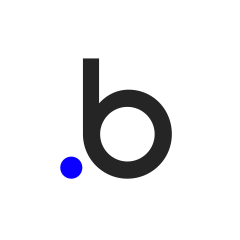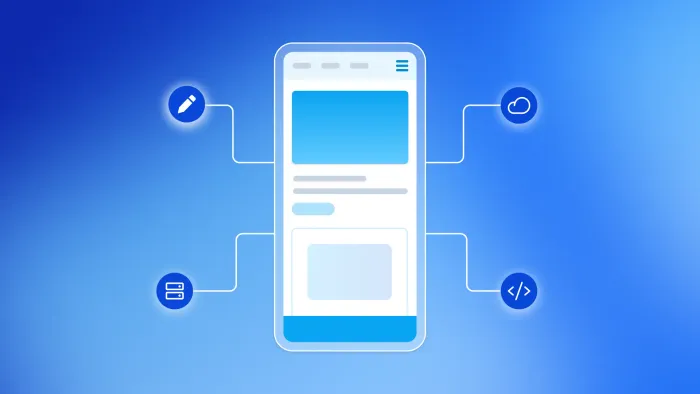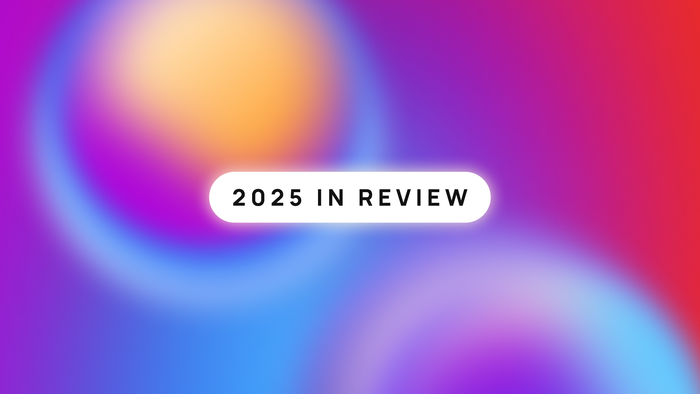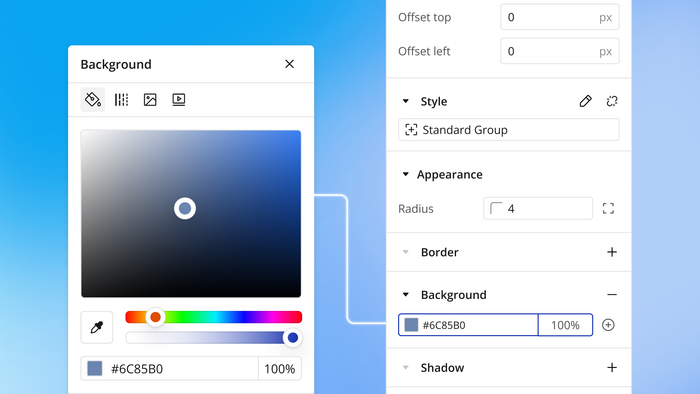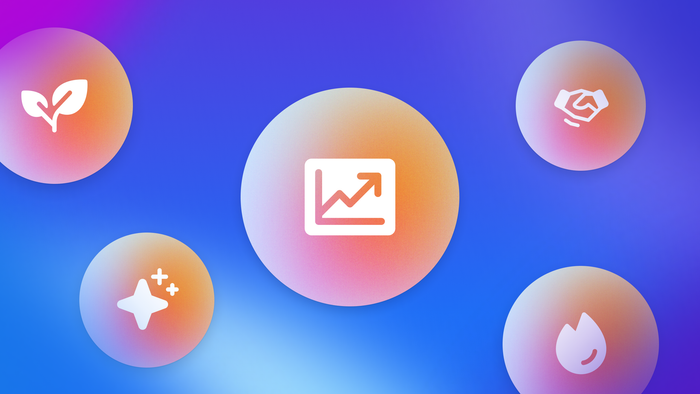Choosing the right tech stack for your mobile app is a big decision. Your mobile app technology will serve as the foundation for how users interact with your product on the go.
Your stack will determine (or limit) all kinds of things:
- What you can create
- How much your app will cost to build
- How long it’ll take to launch
- What kinds of skills your developers will need
- How your app will perform
- What integrations you can work with
Today, there are more tools and options than ever, from traditional development frameworks to no-code options that replace a traditional tech stack all in one tool. In this article, we’ll break down some of the major factors to consider when choosing a tech stack, and share some of our top picks for tools to include in yours.
What is a mobile app tech stack?
Most of the time, when people refer to your mobile app or website’s tech stack, they’re referring to the basic layers of technology that power your product. For mobile, there are four main layers to consider: frontend, backend, platform, and hosting.
Here’s a quick overview to get your bearings:
- Frontend: The code that runs what the user sees, i.e. the UI of your app
- Backend: The code plus the database that manages the data and logic of your app (what the user doesn’t see)
- Platform: The system the user’s device has that runs your app (i.e., iOS or Android)
- Hosting: Where your app’s data and backend “lives,” typically in the cloud.
Frontend
The frontend of your app is the part of your app’s code that powers the user interface (UI), aka the part of your app that users interact with. Common frontend programming languages include Swift or Objective-C for iOS and Java or Kotlin for Android. Cross-platform development languages and frameworks — like React Native, Flutter, or Ionic — allow you to build your app for both iOS and Android in tandem.
No-code tools like Bubble offer an alternative to traditional frontend development. Instead of using a platform-specific programming language, a visual editor lets you develop your UI and run your app without writing a single line of code.
Backend
The backend tech of your app powers the database systems, server code, logic, and APIs needed to make your app functional.
For mobile, your backend traditionally will have at least two pieces:
- Your database: This is where the data of your app is stored. Popular mobile databases include Firebase, PostgreSQL, MongoDB.
- Your server: The code that runs the backend logic of your app and connects the frontend to the database. Popular options include Node.js and Django.
A custom backend will be more complicated, and there are a lot of options now for all-in-one backends that make things a lot easier. For example, “backend-as-a-service” platforms like Firebase or Supabase give you an all-in-one place to build and host your database, manage APIs and authorization, and build logic for your app.
Simpler yet: If you’ve built your frontend on Bubble, you can build and manage your backend and app’s logic on the same platform. That way, you don’t need to build a tech stack from multiple separate technologies to get your app up and running — everything is in one place.
Platform
The platform refers to the operating system that is going to run your app. For mobile apps, this is likely the iOS or Android software development kit (SDK).
An SDK is a set of pre-built components and tools you can use to make your app ready to run on a given operating system. So, for example, the Apple iOS SDK gives you pre-built ways to use the iPhone camera, GPS, or notifications.
You can also have non-platform-specific SDKs that allow you to access pre-built components and functionality for specific aspects of your app, such as the Firebase SDK (to more quickly use Firebase backend services) or the Stripe SDKs (to more easily integrate payments into your mobile app).
Hosting
Finally, your app needs a host: somewhere for the server-side code to live and be able to display for users.
Some all-in-one backend options include hosting (Firebase does, for example). AWS is also a popular option, and there are plenty of other cloud hosting options to choose from too.
Again — if you build on an all-in-one mobile app development platform like Bubble, Bubble takes care of hosting too.
Other mobile app technology
Of course, these are just the basics needed to build a functional app.
Your mobile app tech stack will likely include a variety of other tools and services for testing, iterating, scaling, analyzing metrics, adding functionality, and so on. We’ll get into this more later in this article, but this can include things like Stripe (for payments), Mixpanel (user analytics), Postman (API testing), and other integrations or SDKs.
Sample mobile app tech stacks
OK, so how do all these pieces fit together? And more importantly, with so many options for each element, which ones do you choose?
Let’s break down some of the most popular mobile app tech stacks so you can get a feel for your options.
Traditional iOS tech stack
A traditional iOS tech stack is designed specifically for building iOS mobile apps. They won’t work on other platforms (like Android), but they will allow you to use native device functionality and usually have the strongest iOS performance. A typical stack could be:
- Frontend: Javascript or React Native
- Backend: Node.js + Firebase
- Platform: iOS (with iOS SDK for building)
- Hosting: Vercel or AWS
In this case, your app will be written with JavaScript, then you’ll use Firebase for the backend database and functionality. Node.js is the backend code that will help connect your frontend and backend.
Your app will run on iOS for the user, but the code and database will be hosted in the cloud via Vercel or AWS.
Traditional Android tech stack
This would be a traditional tech stack for building Android apps:
- Frontend: Kotlin or Flutter
- Backend: Java (Spring Boot) + PostgreSQL
- Platform: Android (with Android SDK for building)
- Hosting: Google Cloud Platform (GCP) or AWS
In this case, you’re using Kotlin to design the app, then using a combination of Java for the backend code with PostgreSQL for the database. The app runs on Android and then it’s hosted in the cloud via Google Cloud Platform.
Traditional cross-platform tech stack
Cross-platform mobile development saves you a ton of time by allowing you to build for iOS and Android at the same time, rather than creating two completely separate apps. You still may have to build some components twice, depending on your tech stack, but a cross-platform framework gives you a common language to start from.
- Frontend: React Native
- Backend: Firebase
- Platform: iOS and Android (including both SDKs)
- Hosting: AWS
In this case, you’re using React Native, a mobile app development framework that allows you to build an app that can run on either platform. Firebase allows you to share a backend between the two apps. Then, you can use the iOS and Android SDKs to help make your cross-platform app more native-like.
Tech stack for mobile apps built on Bubble
The most streamlined tech stack option is building on a “full-stack” platform like Bubble. As a full-stack platform, Bubble covers all the elements of your tech stack in a single platform, greatly streamlining your app development process. So on Bubble, your tech stack looks like:
- Frontend: Bubble
- Backend: Bubble
- Platform: iOS and Android
- Hosting: Bubble
Mobile apps built on Bubble use Bubble’s visual editor for designing the frontend, building out logic and setting up databases. Then, Bubble helps you package your app for deployment on the Apple App Store and Google Play Store, and hosts your app on Bubble servers.
It’s the simplest option, especially for anyone not already familiar with mobile development languages, and it ensures that your mobile tech stack will just work together.
Plus, it means that you only have to learn one platform, rather than learning a half dozen — or more — tools. And, you don’t have to figure out how to make all of them talk to each other to run your app.
How to choose a mobile app tech stack
Keep in mind there are almost as many mobile app tech stacks as there are mobile apps. There isn’t a “right” or “wrong” answer — just what will work best for you and your goals.
That said, some tech stacks are easier to work with than others. Here are the key things you should consider when choosing:
Technical ability and familiarity
Most mobile app tech stacks — whether you’re building a platform-specific app or developing cross-platform — require some experience with specific programming languages or frameworks.
This means that your technical ability and experience will influence which tech stacks make the most sense for you (or your team). For example:
- Kotlin Multiplatform is easiest to learn if you’re already familiar with Kotlin.
- Flutter is a great framework for developers who are already familiar with object-oriented programming languages like Java or Python.
- Ionic is great for web developers familiar with HTML and JavaScript.
If you’re new to mobile app development — or software development in general — getting up to speed on some of these languages or frameworks can be time-consuming.
A visual platform, like Bubble, is much easier to learn, especially if you’re already familiar with building on drag-and-drop builders for web. And if you’ve already built web apps on Bubble, you’re leagues ahead. You can reuse the same database (backend) for your mobile apps and simply need to revisit the frontend UI for mobile users.
And soon, you’ll be able to use Bubble AI to generate your mobile app V1. Instead of having to learn programming languages and code everything from scratch — or even build it from scratch visually — you can use AI to generate V1 of your app in minutes and then iterate from there. But even more importantly: you maintain full control, even when you start with AI, and your AI-generated app will be designed for native mobile — something most AI app builders don’t yet offer.
Audience
Do you want to build an app for a specific user base, like a native iOS app for iPhone users? Or do you want to build an app that will be widely accessible regardless of platform or device type?
If you truly only need an app for one platform, platform-specific development is a good route. But if you need or want your app to be available to a broader audience, you’ll eventually need to make an iOS and an Android version.
Cross-platform development has gotten a bad reputation in the past due to performance issues and “shortcuts” that have traditionally made cross-platform development possible. However, newer technologies and frameworks — like the React Native framework Bubble uses for mobile apps — allows you to create truly native mobile apps for both platforms, without using wrappers.
Budget
Budget is obviously a consideration, and can make a big difference in which tech stack you choose for your mobile app. Most traditional mobile development tech stacks require significant resources: at minimum, a specialized development team and development tools to build and maintain each app, plus longer timelines.
These specialized resources are often cost-prohibitive for small startups, and building on a lighter, no-code tool requires far fewer upfront resources. No-code tools also give you more for your money. You can be much more flexible with no-code by developing software that can be used both on the web and mobile, as opposed to traditional mobile development that’s limited to a specific operating system.
Timing
Some tech stacks also allow for far faster production than others. Cross-platform app development allows you to build and launch your app on multiple platforms, and for more users, with less development time. And no-code tools like Bubble allow you to build an MVP and scale for launch and growth in users even faster than traditional tech stacks.
While traditional development might take years to build each mobile app, Bubble’s mobile app development typically takes just weeks or months. With visual development tools, cross-platform development, a shared backend, and a streamlined tech stack (everything is under one platform), development is far faster than the traditional model.
Functionality
What do you want your app to do? What skill level do you need to have to make that functionality possible?
Everything from programming languages to platforms can impact how your app functions and what you’re able to do — or how much effort it requires to implement the functionality you’re looking for.
For example, if you’re looking to integrate AI into your app, that can require vastly different amounts of knowledge and expertise depending on what tech stack you’re using.
Traditional tech stacks will require you to understand how to build API routes in your backend, how to manage REST APIs to communicate between the backend, frontend, and AI provider, how to authenticate and secure AI requests, and so on. And all of this would have to be managed via code in whatever language or framework you’re working in.
By contrast, adding AI features to your mobile app on Bubble is pretty simple, and can be done completely without code. You can connect to AI providers via pre-built plugins or the API connector, and set up AI workflows and requests via the visual workflow builder.
Recommended mobile app tech stack
Most founders and entrepreneurs don’t have time or resources to hire an entire mobile development team to make an app for them.
If that sounds like you, we recommend choosing a lightweight, all-in-one tech stack that allows you to build everything in one place. You don’t have to juggle multiple platforms (or multiple subscriptions). You don’t have to learn multiple tools or programming languages or frameworks. Everything is one place for you to build the basics, and you can expand out from there.
Here’s an example of some of the tech you might want in your stack:
Bubble
Unlike most traditional tech stacks, Bubble offers full-stack technology for your product’s build and hosting — all in one platform.
One platform houses everything you need, from frontend to backend to APIs and more. Plus, Bubble’s visual editor means you don’t have to learn a coding language (or multiple).
Instead, an intuitive, drag-and-drop editor allows you to build native, cross-platform apps on top of the React Native framework. Here’s how it works:
- You build your frontend in the visual editor, using drag-and-drop tools to design for mobile.
- You build your backend — the database and the workflows — in the same visual editor, with “if this, then that” frameworks to build the logic for your app.
- Your app is hosted on Bubble’s servers, powered by AWS for secure and scalable infrastructure that you don’t have to manage.
- And then, your app can run on both Android and iOS platforms, and you can launch to mobile app stores directly from the Bubble editor.
Even better, if you want to build a web app as well, you can do so from the same Bubble editor. Shared backends and editors let you “translate” your app for the web in record time, with as little rebuilding as possible.
Plus, Bubble’s API connector allows you to easily connect your app to any other technology or tool you need, without having to code integrations. Not to toot our own horns, but it’s the fastest, simplest tech stack for creating cross-platform, native mobile apps.
Stripe: Payments system
A payments system is crucial for any mobile app tech stack. We recommend Stripe, as it’s easy to integrate to almost any app via an API (we have an official Stripe plugin, if you’re building on Bubble).
A payment processing system allows you to monetize your app — which, if you’re building a business, you’ll definitely want to do — through subscriptions, in-app purchases, premium content or features, and more. As such, considering from the start how you’ll integrate a payments system and payment processing solution into your app development tech stack is a must.
Zapier: Automation and integrations
Zapier is one of the easiest and most flexible tools to include in your tech stack. With Zapier, you can create automated workflows, tasks, and triggers — known as “Zaps” — that connect thousands of apps and platforms.
Plus, with the official Zapier plugin for Bubble, it’s easy to harness Zapier’s automation power for your Bubble-built app. Once you connect the two apps, the sky is truly the limit for what you can do. You can set up automations, build workflows between your Bubble app and thousands of other apps, create and modify databases in your app based on preset conditions, and more.
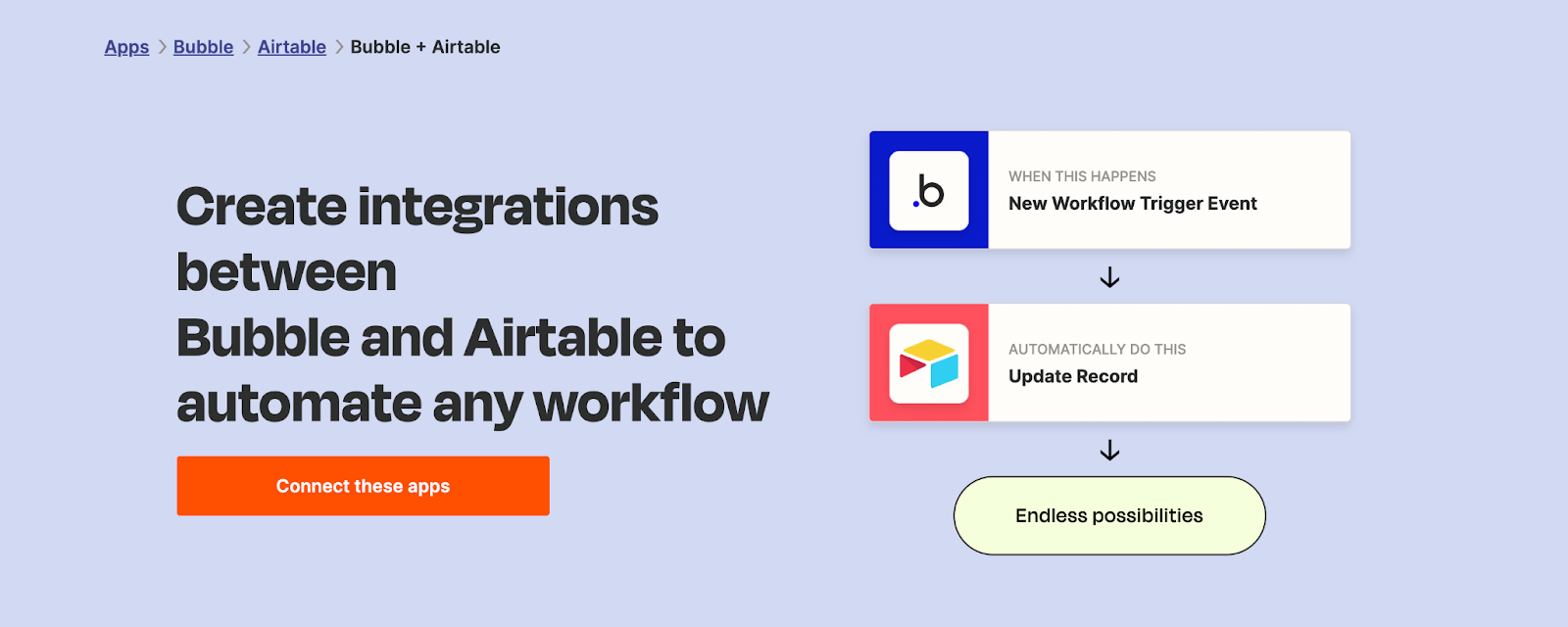
Want to modify your Bubble database based on your Hubspot contacts lists? Send your team a Slack notification when you get a new piece of in-app feedback? Send out an email campaign when a certain event occurs on Bubble? You get the idea. Zapier — like many of the other tools on this list — allows you to seamlessly integrate your tech stack, simply and quickly.
Google Analytics: Understand your app’s traffic
Building your app is just step one — you’ll also want tools to understand how it’s performing. Google Analytics is key for understanding how your mobile app content performs. For example:
- Do most users download your app from your website or through another channel?
- Which pages on your app are the most popular?
- How long do users spend on each page of your app?
- How do users find out about your app or product in search?
Google Analytics can answer all of these questions and tons more. Integrating Google Analytics with your Bubble app is as easy as adding your Google Analytics tracking ID to your plugins page on Bubble. From there, you can create and track custom events, get audience insights, and keep an eye on site and search performance.
PostHog: Product analytics
PostHog is great for analysis and observation, but it also covers a lot of product experimentation methods, too. You can use it for A/B testing, session recordings, feature flags, and more. Plus, you can get in-app feedback directly from your end users to add qualitative analytics to your quantitative results. All of this not only gives you insight into how your app is currently performing, but also helps you test and iterate on new features faster.
And yes — PostHog integrates effortlessly with Bubble via API to make developing and improving your app on Bubble that much faster. (We even have a community-built plugin!)
Usersnap: Bug fixes and user feedback
One of the biggest missing pieces in many mobile app tech stacks are tools dedicated to user feedback, testing, and bug fixes. Yes, you can make this part of your process and workflow without dedicated tools — but having an integrated, streamlined app tech stack makes it easier to collect useful feedback and bug reports. Plus, it streamlines project management, making it easier to quickly implement and test new features.
Usersnap makes user feedback, well … a snap. We use it here at Bubble to collect all of our data all in one place, capture common reports and specific insights, organize and prioritize requests, and keep Bubble growing and improving.
Here’s what Maria Posa, a Bubble Developer on our team, has to say about it:
“At Bubble, we use Usersnap to collect bug reports when QAing specific features and when we happen upon something when going about our daily business. The beauty of Usersnap is that we can collect annotated screenshots, video recordings, and text descriptions, which makes it really easy to understand what was submitted. It’s very quick for the submitter, and it’s easy for the receiver to digest visually! Plus, we’ve set up automations in Slack to alert us when there’s new feedback and in Jira to create a new ticket that we can then use to track and assign the work.”
If you’re building on Bubble (like we are!), you can connect Usersnap to your app via API and use Zapier to set up custom workflows and automations.
Mixpanel: Understand user behavior
Of course, you don’t just want to understand how your app is performing, you want to see how real users are interacting with it.
Mixpanel is another way to understand user behavior, test and iterate new features based on user interaction and feedback, and make data-driven decisions that improve your product for your users and aid in retention. While Usersnap allows you to record and gather feedback directly from users, Mixpanel helps you see the data behind users’ interactions, like user growth, session metrics, first session conversion, and so on.
And yes, Bubble has an official Mixpanel plugin to make capturing user analytics easier.
Build your mobile app on Bubble
If you’re ready to quickly design, develop, and launch your next product, swap your multi-layer mobile app tech stack for Bubble.
Bubble is the only full-stack, all-in-one platform that gives you everything you need for cross-platform, truly native mobile apps. And with no coding needed, plus dozens of dedicated plugins and thousands more integrations available with APIs, Bubble makes it easy to build whatever you’re dreaming of.
Build for as long as you want on the Free plan. Only upgrade when you're ready to launch.
Join Bubble